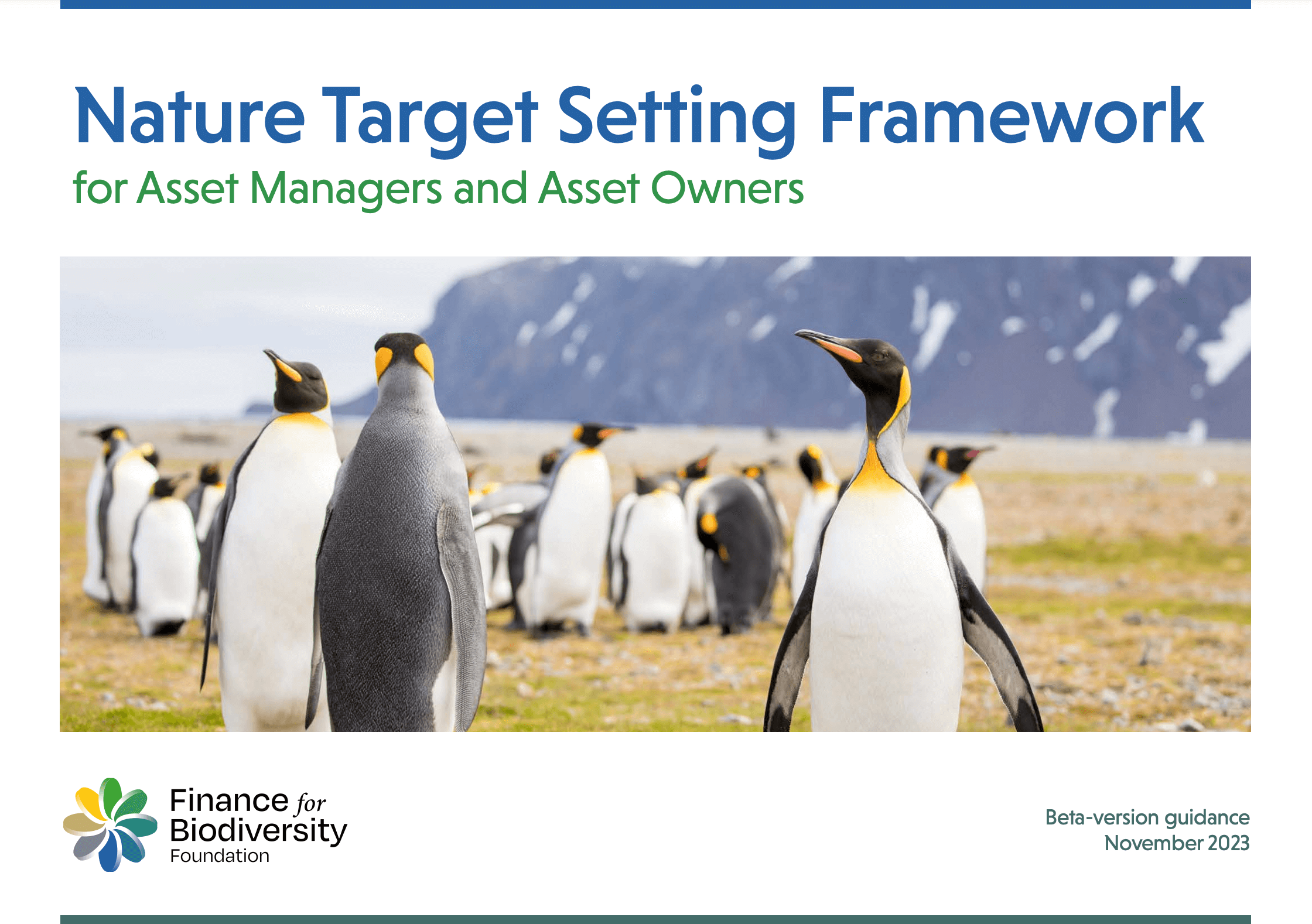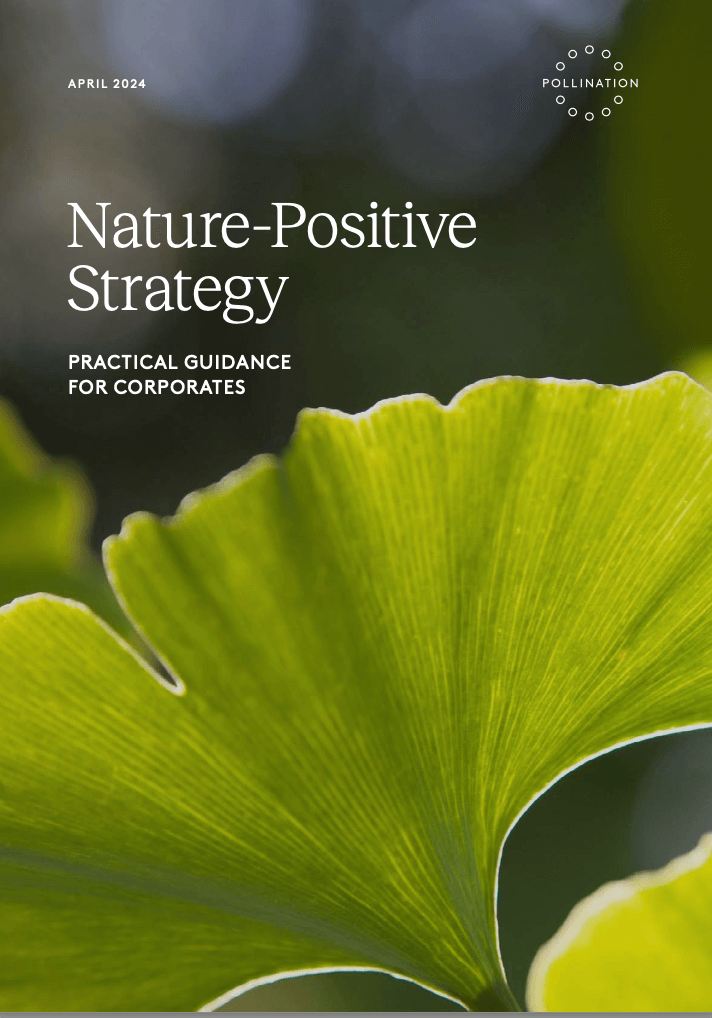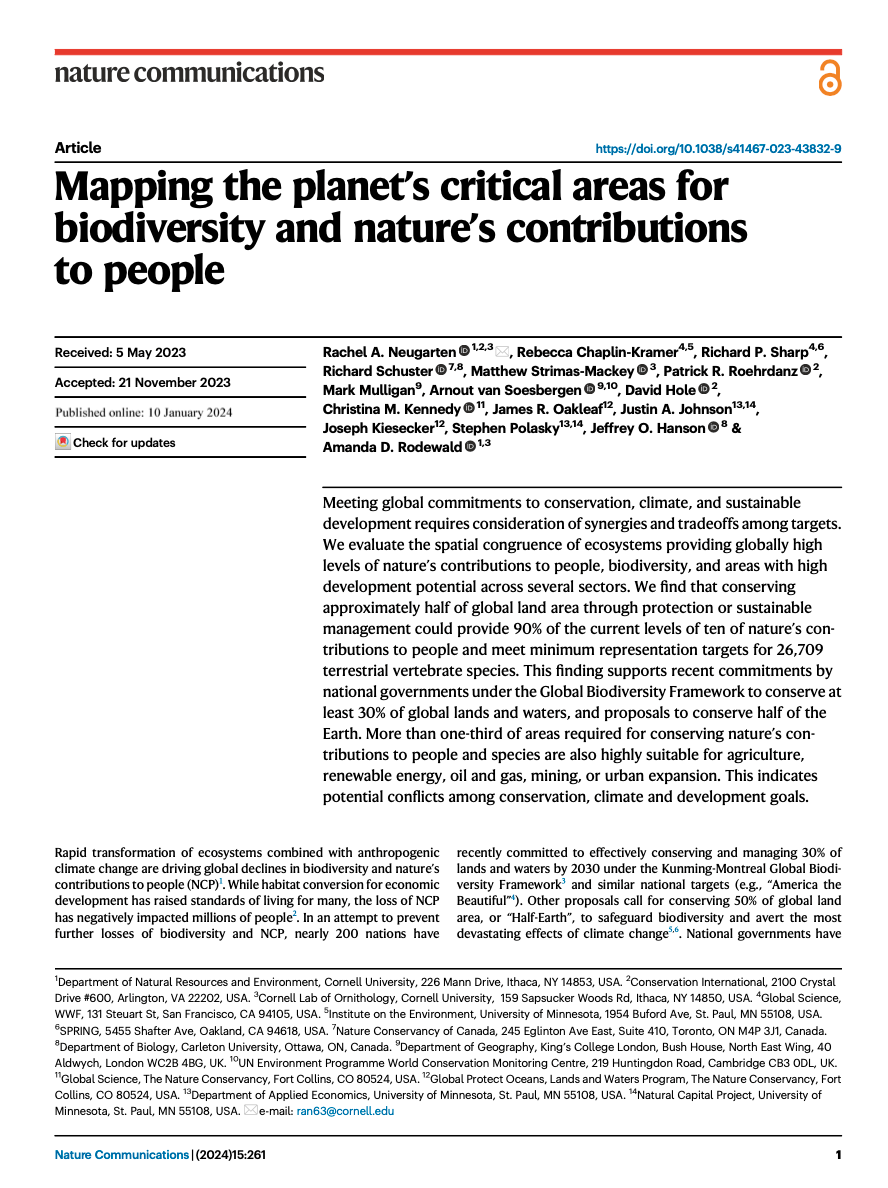Mapping the planet’s critical areas for biodiversity and nature’s contributions to people
Detalles
| Meeting global conservation, climate and sustainable development commitments requires taking into account synergies and trade-offs between objectives. This research assesses the spatial congruence of ecosystems that globally provide high levels of nature's contributions to people, biodiversity, and areas with high development potential in various sectors. The analysis concludes that conserving approximately half of the world's land surface through protection or sustainable management could provide 90% of the current levels of ten of nature's contributions to people and meet minimum targets for the representation of 26,709 terrestrial vertebrate species. This conclusion supports recent commitments by national governments in the Global Biodiversity Framework to conserve at least 30% of the planet's lands and waters, as well as proposals to conserve half of the Earth. More than a third of the areas needed to conserve nature's contributions to people and species are also well suited for agriculture, renewable energy, oil and gas, mining or urban sprawl. This indicates potential conflicts between conservation, climate, and development goals. |
Recursos relacionados

Trase and the EUDR: Motivating and enabling world-first legislation to tackle commodity driven deforestation
This analysis provides an assessment of the EU's deforestation footprint highlighting the most affected commodities, companies and regions.

Nature Target Setting Framework for Asset Managers and Asset Owners
This document is a beta version of the Nature Goal-Setting Framework guidance report for Asset Managers and Asset Owners, developed…

Nature-Positive Strategy. Practical Guidance for Corporates
Building on its global work on nature, Pollination has published this user guide for businesses to take action and be…


